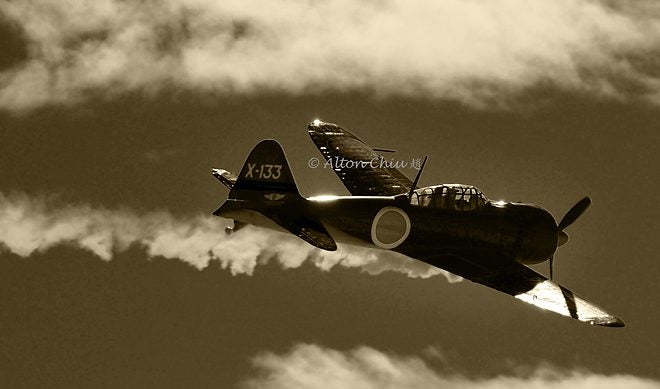Commemorative Air Force (CAF) has squadrons around the United States dedicated to preserving and flying warbirds. Manned by volunteers and funded by donations, they bring many iconic WWII aircraft into flight worthy conditions for air shows and rides. The author had an opportunity to visit the Ghost Squadron in Camarillo, CA (https://www.cafsocal.com/). These two A6M3 articles are the first of a series, with more aircraft to follow. This first half focuses on the armament of the Zero.
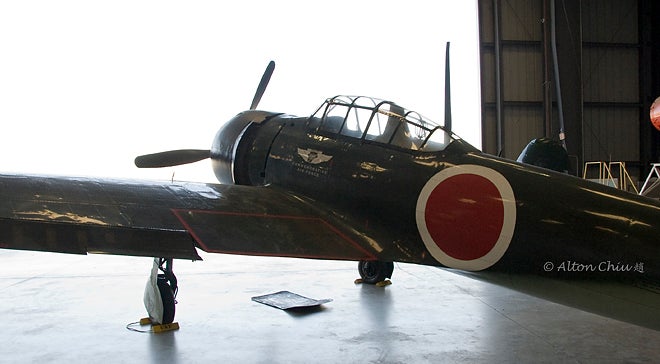
Airframe History
The Zero in CAF collection is an A6M3 Model 22. The A6M3 Model 32 improved upon the early war A6M2 with a new two-speed supercharged Sakae 21 engine. However, it suffered decreased fuel capacity and clipped wingtips. The A6M3 Model 22 reinstated the folding wingtips and addressed the fuel capacity to give the range of the A6M2 with the new 1130hp radial engine.
The CAF Zero was recovered from Babo in New Guinea in 1991 and displayed in the Museum of Flying in Santa Monica. Japanese benefactors furnished an original set of blueprints and the Zero was rebuilt in the former Soviet Union alongside a modern production Yak-3 also in the Camarillo collection. The rebuilt along with FAA requirements are evident in the mix of Japanese, Cyrillic and English nameplates and equipment. Certified in the Experimental category, this Zero flies to various air shows every year and participates in scripted dogfights.
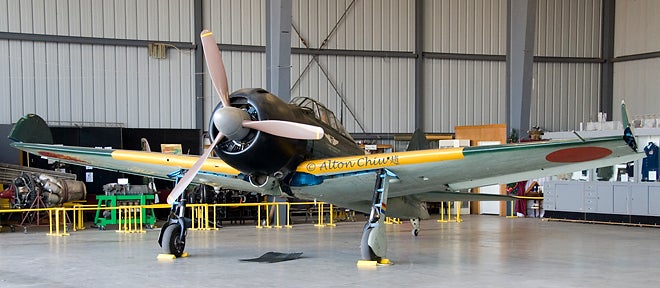
7.7mm Type 97 Machine Gun
Like the earlier Mitsubishi A5M, the early war A6M Zero mounted a pair of 7.7x56mm R Type 97 machine guns in the engine cowling. The 7.7x56mm R was a direct copy of the 303 British and used in guns copied or derived from British weaponry such as the Lewis gun. The ammunition was incompatible with the 7.7x58mm rimless of the Type 99 Arisaka rifle or the 7.7x58mm semi-rimmed of the Type 92 heavy machine gun.
The guns were mounted in the upper cowling area with the breach exposed in the cockpit. This allowed the pilot to charge the guns manually. It is not immediately clear to the author whether the pilot could clear jams in flight. Expended cases ejected through ports on the fuselage just forward of the canopy. The mirrored ejection ports and charging handles necessitated left and right-hand model guns. In addition, the guns gave the cockpit dash two distinctive humps at the corners in contrast to the steeply inverted V shape of the P-51 dash. The author surmises the gun mounts could mask the target if a Zero pilot was banking for a deflection shot.
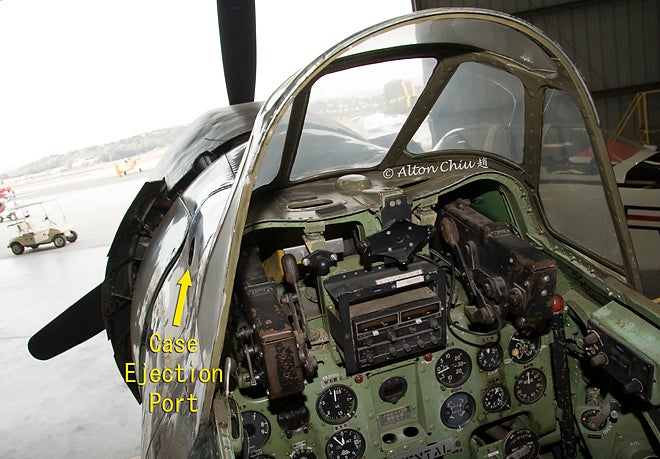
These guns synchronized to fire through the propellers. [Edit] The synchronizer chose the precise moment to fire the gun interrupted the gunfire when the propeller masked the gun, so as to avoid shooting off one’s own propeller. Originally a mechanical device in the early WWI incarnations, it had evolved into an electrical solenoid by the 1930s. The synchronizer relied upon repeatable ignition timing of the gun in order to de-conflict the propeller with the projectile. The closed bolt nature of the Type 97 made for less timing variability than an open bolt weapon such as the 303 Browning. As such, the Type 97 proved suitable for synchronization.
20mm Type 99 Cannon
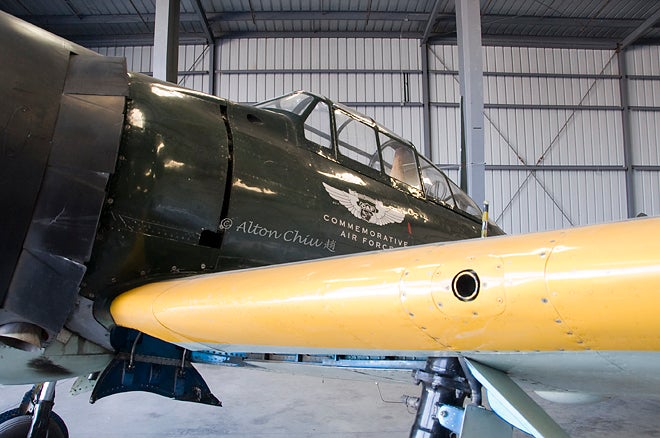
The A6M2 mounted two Type 99 Mark I cannons while the A6M3 upgraded to the Mark II cannons with a 100 round drum each. The Mark II utilized larger ammunition (20x101mm RB vs. 20x72mm RB) for faster muzzle velocity (750m/s vs. 650 m/s). The larger Mark II (189cm vs. 133cm) and higher ammunition capacity required a small bulge on the underside of the wing. The Type 99 cannon fired from an open bolt and thus was incompatible with synchronizers. The cannons are on the wing outside of the propeller arc, just outboard of the fuel tanks. The spent cases ejected overboard via an opening in the underside of the wing.
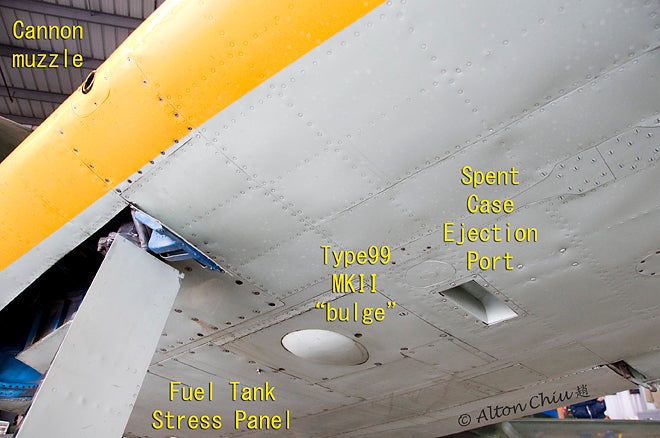
The Type 99 Mark I and Mark II cannons were licensed copies of the Oerlikon FF and FFL using an Advanced Primer Ignition (API) blowback operating mechanism. The API blowback ignited the primer as the bolt was traveling forward, so the recoil must overcome the forward momentum of the bolt as well. This approximately halved the bolt mass**. To accommodate this advanced ignition, the gun featured an extended chamber (longer than necessary if locked breech) and the ammunition featured a rebated rim. The extended chamber supported the case as it entered and exited under pressure. The rebated rim allowed the bolt to enter and exit the extended chamber. The ammunition requirement was exacting as the projectile weight and powder pressure curve finely balanced against spring and bolt mass. In spite of this, the benefit of reduced bolt mass and recoil worked well with the lightweight design philosophy of the Zero.
Concluding Thoughts
This early war A6M3 followed the tradition of fuselage mounted, rifle caliber machine guns stemming from WWI. However, the advanced bomber threat of the 1930s mandated the addition of 20mm cannon on the Zero similar to other Axis designs of the era (e.g. Bf109). [Edit] This contrasted with its classical opponents such as the F4F and F6F contemporary British (Hawker Hurricane) and American (F4F) designs which featured armaments carried exclusively on the wing. In the next part, the article will examine the cockpit, wing, and engine of this CAF Zero.
Errata
The author thanks Tony Williams for his illuminating information in the comments section.
Further Reading
* Robert C. Mikesh, Japanese Aircraft Equipment, Schiffer USA, 2004.
** Chinn, George M. (1955). The Machine Gun, Volume IV: Design Analysis of Automatic Firing Mechanisms and Related Components. Washington, D.C.: Bureau of Ordnance, Department of the Navy.
 Your Privacy Choices
Your Privacy Choices
